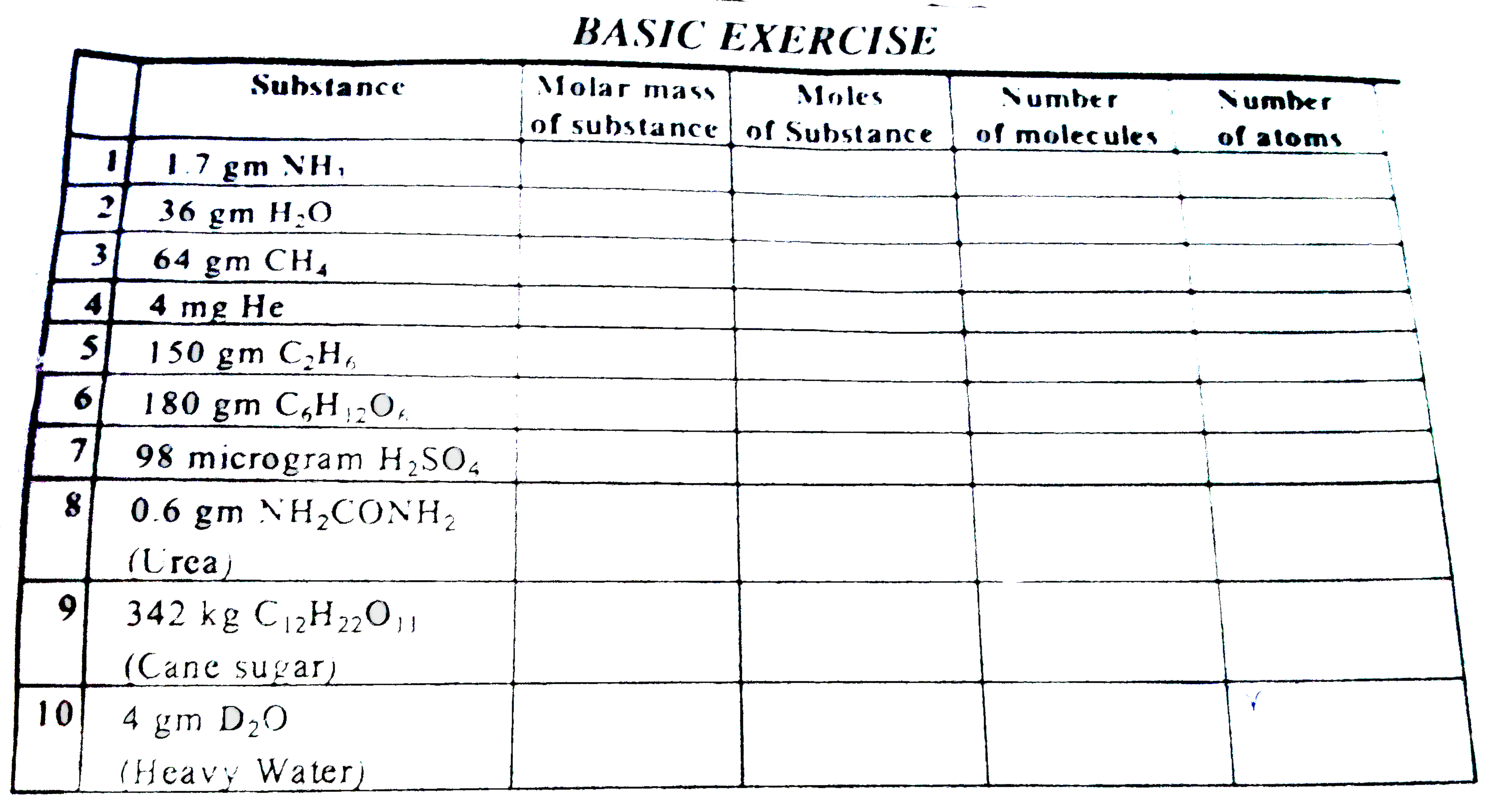Consider the following balanced chemical reaction
3A+4B+5C→2D
If 7 moles of A, 9 moles of B and 8 moles of C are given initially, the mole fraction of D present after completion of reaction is
A
0.24
B
0.65
C
0.4
D
0.08
Text Solution
The correct Answer is:C
3A + 4B +
Moles 7 9
After reaction : 2 .2 2 .6
∴ C is limiting reagent
Mole fraction of D= 0.4.
|
Topper's Solved these Questions
Similar Questions
Knowledge Check
For the reaction :
7A+13B+15C⇒17P
If 15 moles of A, 26 moles of B and 30.5 moles of C are taken initially, then limiting reactant is:AABBCCDnone of theseFor the reaction A + 2B → C, 5 moles of A and B moles of B will produce
A5 moles of CB4 moles of CC8 moles of CD13 moles of CFor the reaction A+2B→C,5moles of A and 8moles of B will produce :-
A5 moles of CB4 moles of CC8 moles of CD13 moles of C
For the reaction A+2B→C,5moles of A and 8moles of B will produce :-
View Solution14 moles of A and 20 moles of B, 8 moles of C is formed in the following reaction 3A+4B→2C then.
View Solution
A→2B+C
3B→2D
Find moles of D produced if initially 3 moles of A are taken.
View Solution
A→2B+C
3B→2D
Find moles of D produced if initially 3 moles of A are taken.
View Solution14 moles of A and 20 moles of B, 8 moles of C is formed in the following reaction 3A+4B→2C then.
View Solution
